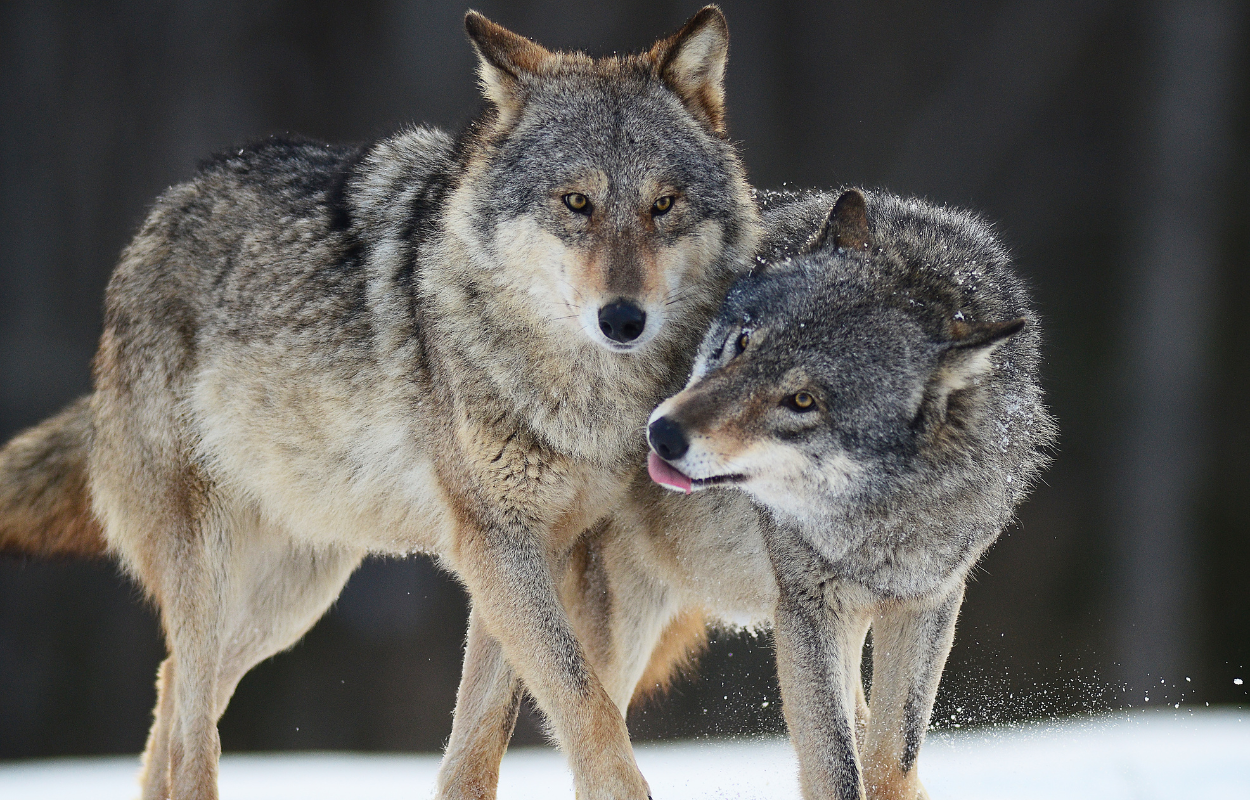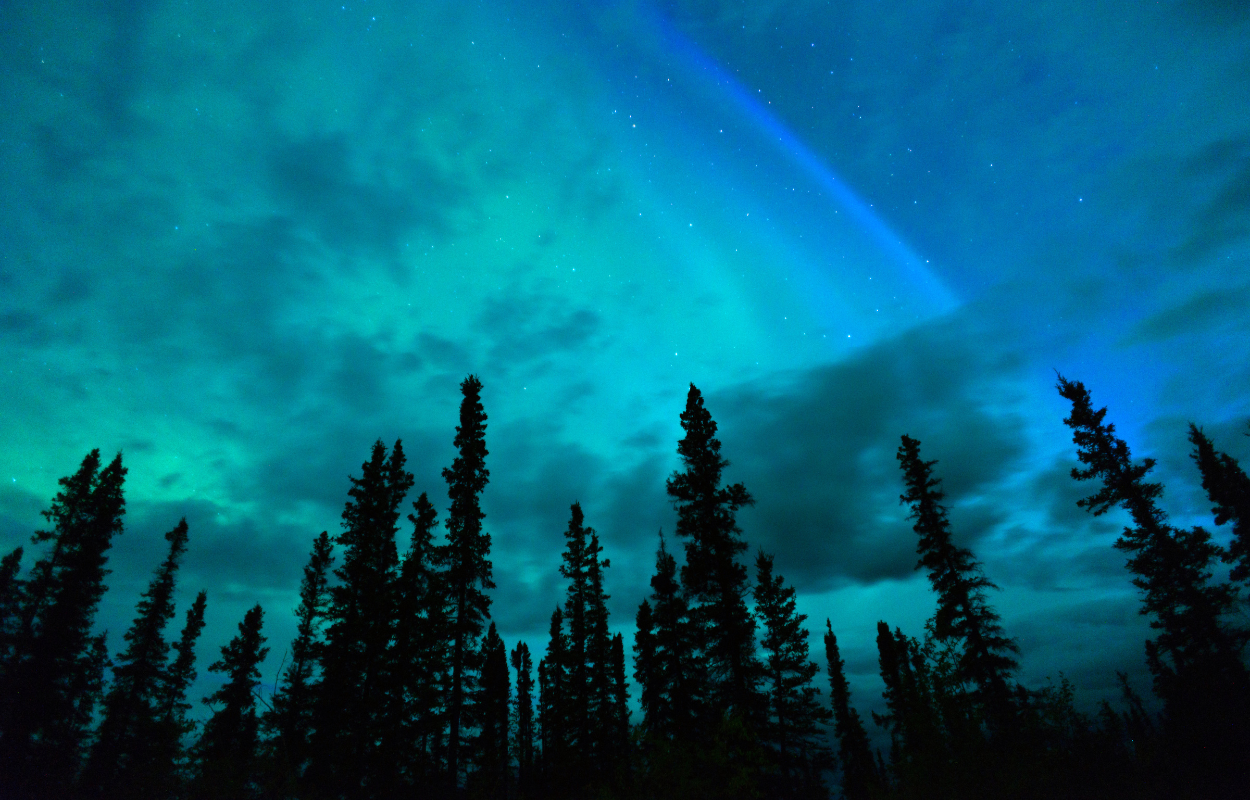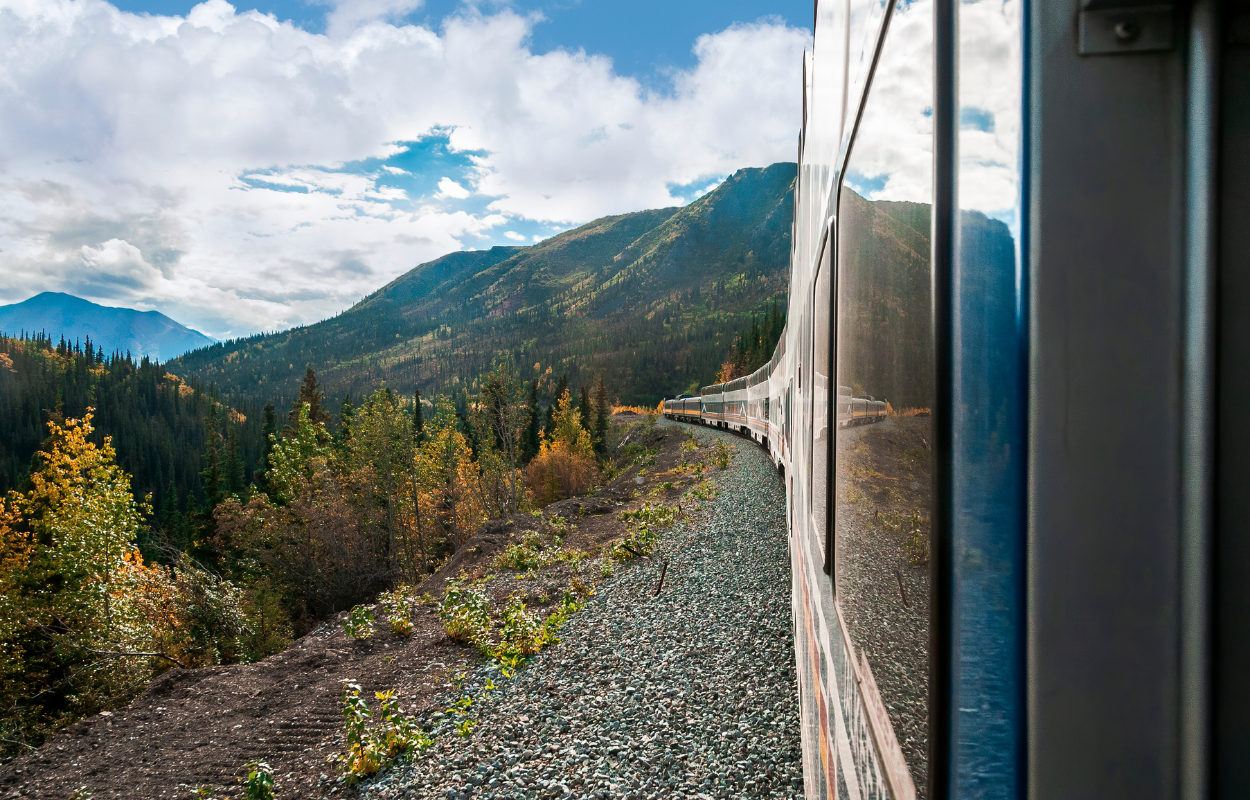Denali National Park is more than just stunning landscapes and awe-inspiring mountains. It’s also home to some of the most iconic wildlife in North America. From grizzly bears lumbering across the tundra to golden eagles soaring high above, the diversity of Denali wildlife makes it a bucket-list destination for nature enthusiasts.
Meet Denali’s “Big Five”
One of the big appeals of Denali is the chance to spot the famed “Big Five” – a term borrowed from African safaris and playfully applied to Alaska’s top wildlife. In Denali National Park, the “Big Five” refers to grizzly bears, moose, caribou, Dall sheep, and wolves. These are the high-profile animals everyone hopes to see. Let’s get to know each of these Denali residents:
Grizzly Bears
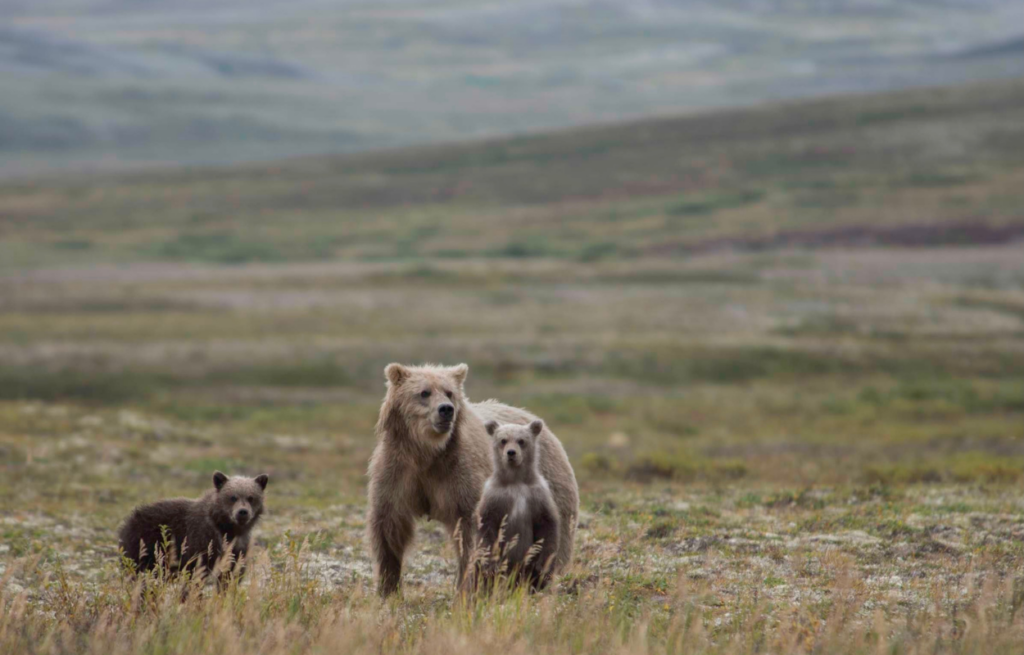
Grizzly bears are one of Alaska’s most powerful creatures, often spotted near streams or feeding on berries in the tundra. Approximately 300–350 grizzlies roam the park’s north side, making their homes in open tundra and along gravel river bars. You’ll often spot grizzlies near rivers (like the Savage or Teklanika Rivers) digging for roots or browsing on berries. These bears are most active in the warmer months, feeding intensely from late spring through early fall to fatten up for winter hibernation. If you’re lucky, you might see a mother bear (sow) with cubs, especially in early summer. Always view them from a safe distance – grizzlies may look slow but can move with astonishing speed if startled or threatened.
Moose
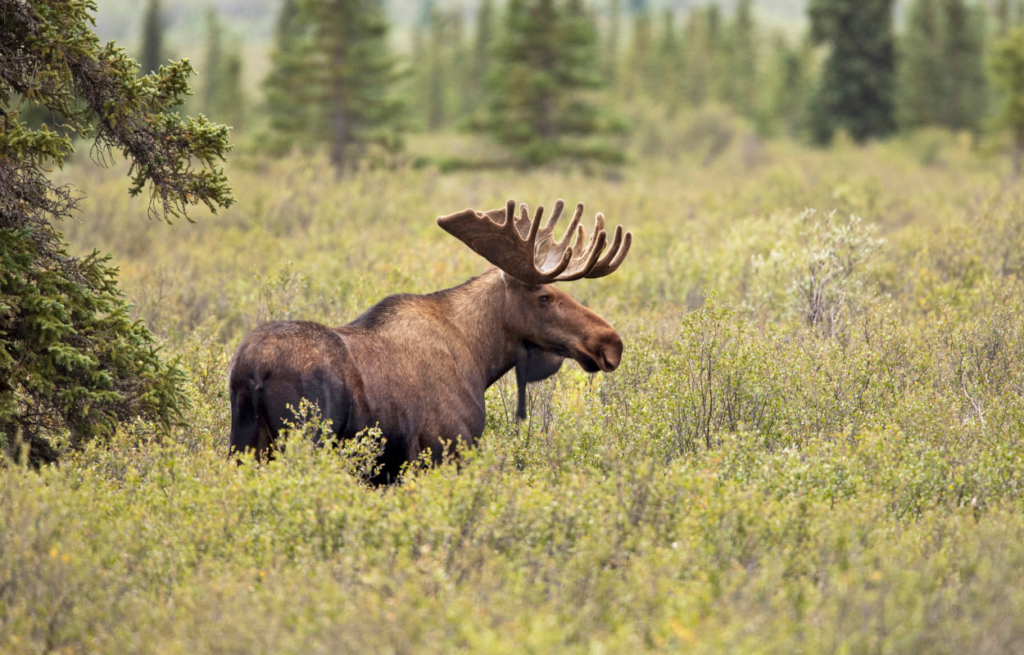
The Alaskan moose is the largest member of the deer family, and Denali’s moose are truly gigantic – adult bulls can weigh up to 1,500 pounds and stand 6 feet tall at the shoulder. Moose are commonly found in wet areas such as river valleys, marshes, and lakeshores. Near the park entrance and along the first miles of Denali’s Park Road, it’s not unusual to spot moose browsing on willow bushes or cooling off in ponds. They tend to be most active in the early morning or late evening, when they come out to feed in the cool hours of the day. In autumn (mid-August through September), keep an eye out for bulls with full-grown antlers engaged in the rut (mating season) – it’s a spectacular time when male moose clash and display their impressive racks. Give moose plenty of space, especially cows with calves, as they can be defensive and quick to charge if they feel threatened.
Caribou
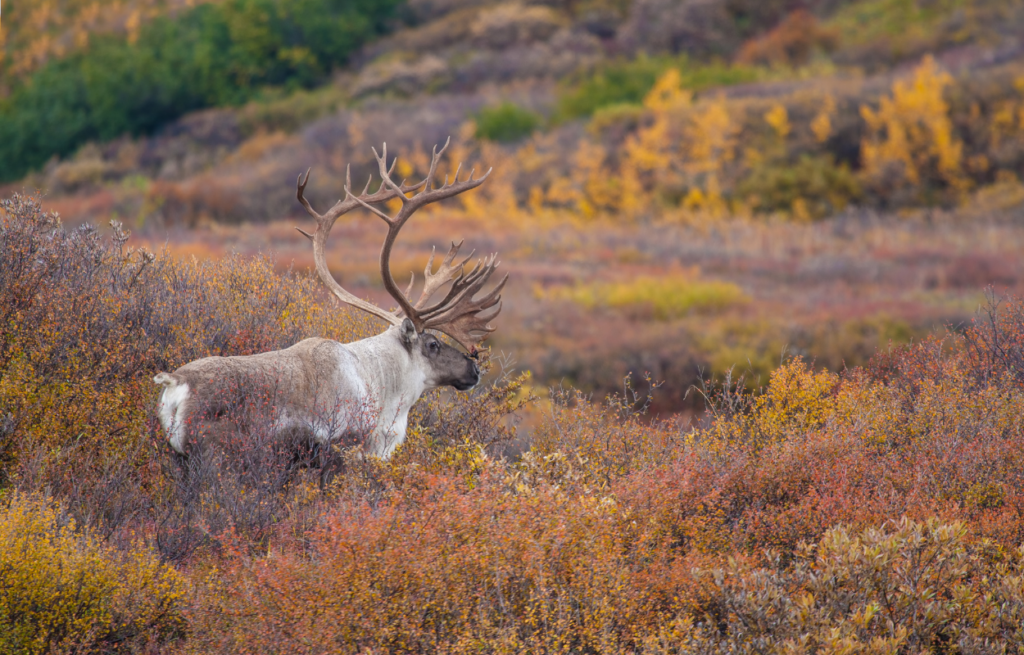
Caribou (a wild reindeer species) roam Denali’s vast tundra and are a symbol of the Alaskan wilderness. Denali’s caribou herd is about 2,000 strong, though you’ll typically see them in smaller groups of a few to a few dozen. In early summer, caribou frequent open areas east of the Savage River; later in the season, they may move westward to higher elevations and gravel bars to escape insects. Both male and female caribou grow antlers, though the bulls’ antlers are larger and more complex.
Caribou are migratory and most active in summer months as they forage on grasses, sedges, and lichens under the midnight sun. Seeing a line of caribou trekking across Denali’s tundra, with snow-capped mountains behind them, is an unforgettable sight. In winter, caribou generally move to lower elevations and paw through snow to find food, but most visitors won’t encounter them during the park’s off-season.
Dall Sheep
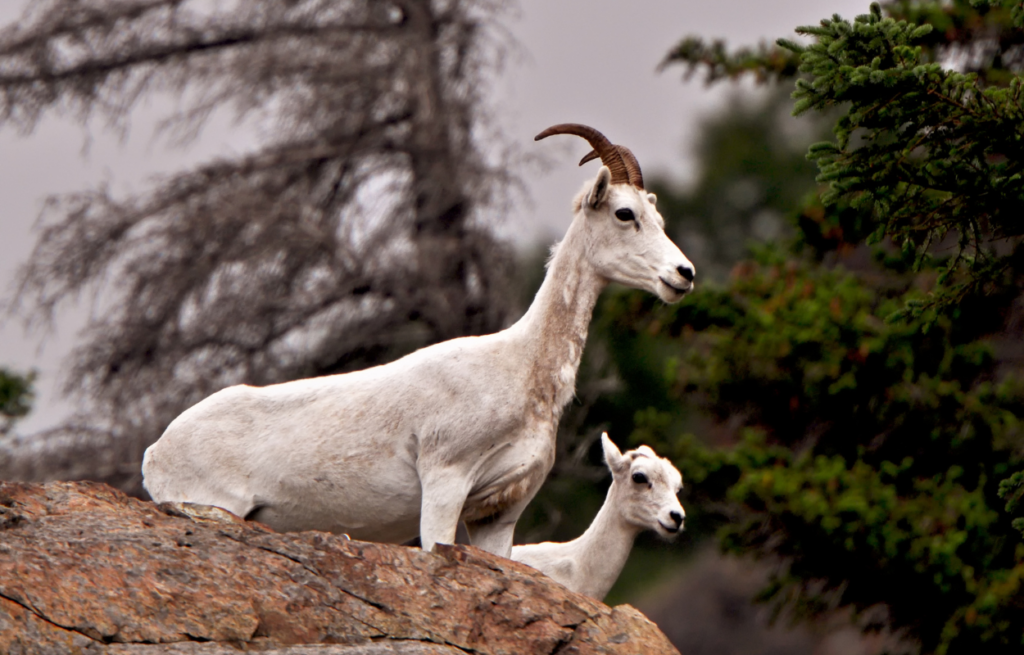
Snow-white Dall sheep cling to the mountain ridges of Denali, embodying the rugged spirit of the park. These wild sheep prefer high alpine areas and steep, craggy cliffs – their favored habitat because it offers safety from predators like bears and wolves. There are around 2,500 Dall sheep in the park, often seen on mountainsides such as Igloo Canyon, Polychrome Pass, and the peaks near Toklat.
Summer is the best time to spot Dall sheep, as they move to slightly lower elevations to feed on alpine plants once the snow melts. Look for them as small white specks on green slopes or rocky outcrops; a pair of binoculars will reveal the curl of a ram’s horns or the nimble steps of lambs following their mothers. Dall sheep hold a special place in Denali’s history – in fact, concern for their conservation was one of the reasons the park was originally established in 1917. Spotting these hardy “mountain climbers” in their element is a rewarding challenge for wildlife enthusiasts.
Wolves
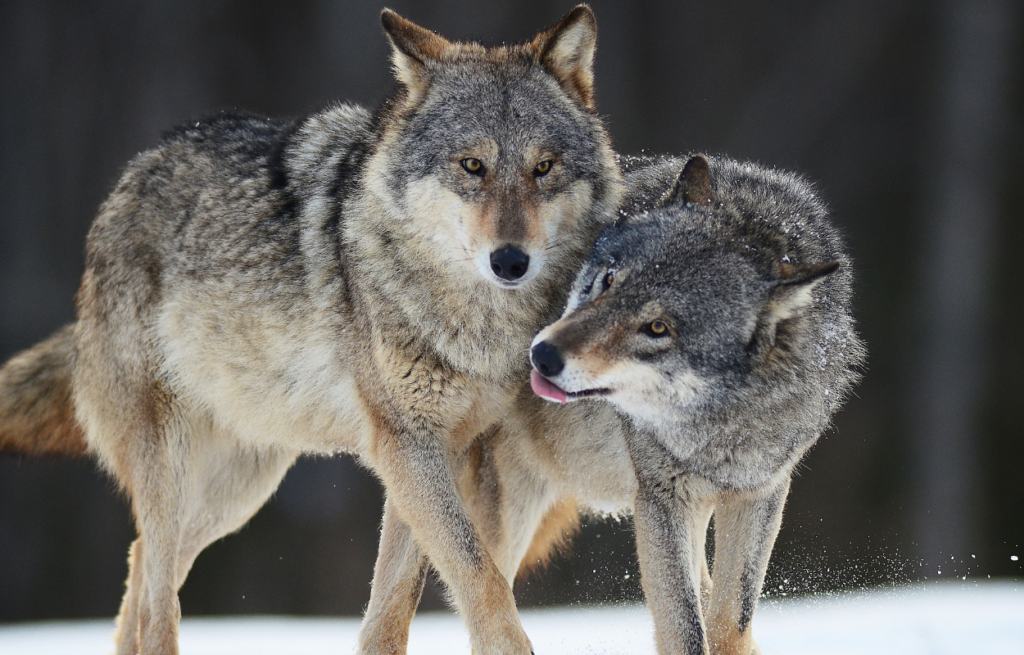
Wolves are the most elusive of Denali’s Big Five, but arguably the most magical to encounter. Denali’s wolf population fluctuates around 80–100 wolves in the park’s north side packs. These intelligent predators roam large territories, so sightings are relatively rare and always special. You’re more likely to hear wolves than see them – their haunting howls echo across the valleys, especially at dawn and dusk. Wolves in Denali hunt snowshoe hares, Dall sheep, caribou, moose, and smaller animals, and they are active year-round (unlike bears, they don’t hibernate).
If you’re hoping to see a wolf, your best bet is to scan open areas like river bars and tundra flats in the early morning or evening, when they might be traveling or hunting. Keep in mind that wolves tend to avoid areas of high human activity; venturing deeper into the park (beyond the first 15 miles of the park road, accessible only by shuttle or tour buses) improves your odds of a glimpse. Even if you don’t see one, experiencing the wild chorus of howls under the Denali sky is something you’ll never forget.
Other Wildlife to Look For
Beyond the Big Five, Denali is teeming with other fascinating creatures. You might spot Arctic ground squirrels darting around, red foxes hunting for prey, or bald eagles perched majestically in the trees. In summer, the region comes alive with migratory birds, creating a paradise for birdwatchers.
When Is the Best Time to See Wildlife in Denali?
Timing is everything when it comes to wildlife viewing. Generally, the best time to see wildlife in Denali National Park is during the summer months, from late spring through early fall. Specifically, the period from May to early September offers the most activity: animals are out feeding, raising young, and preparing for migration or winter. During these months the weather is mild enough for both wildlife and humans to be active, and the park’s access road is open, allowing you to get to prime wildlife habitats. By mid-September, snow and cold will cause many animals (and park services) to retreat; bears enter hibernation by late fall, and many birds migrate south.
Time of day also matters. In Denali, early morning and late evening are prime times for wildlife activity. Animals tend to be more active during the cooler parts of the day, and you’ll also have fewer other people around. If you can rise with the summer sun (which is very early in Alaska!), a dawn drive or hike might reward you with moose grazing in misty meadows or wolves trotting near the road. Evening twilight can similarly offer great sightings – for instance, bears often emerge in the evening to forage when the day’s heat fades. On the other hand, midday can be quieter for wildlife, especially if it’s warm, as many animals rest in the shade.
Tips for Wildlife Viewing
To make the most of your wildlife spotting adventure:
- Keep a safe distance – Always give wildlife plenty of space. Stay at least 300 yards (about 275 meters) from bears and wolves, and at least 25 yards from moose, caribou, and other animals.
- Be patient and quiet. Animals are more likely to appear when there’s minimal noise.
- Bring binoculars. They’re essential for spotting animals from a safe distance.
- Time it right. Early morning and late evening are prime times for wildlife activity.
- Dress appropriately. Layer up for the cool Alaska air and bring sturdy footwear.
- Carry bear spray and know how to use it.
Animals in the Denali region are most active during the early morning or evening hours, aligning with cooler temperatures and less human activity. Summer months (June-August) are peak times for wildlife visibility due to both animal behaviors and accessibility to tours. Explore tours offered by Denali ATV Adventures, Denali Park Zipline, Denali Jeep Excursions, and Experience Denali, which may enhance your ability to encounter wildlife but do not guarantee sightings.

